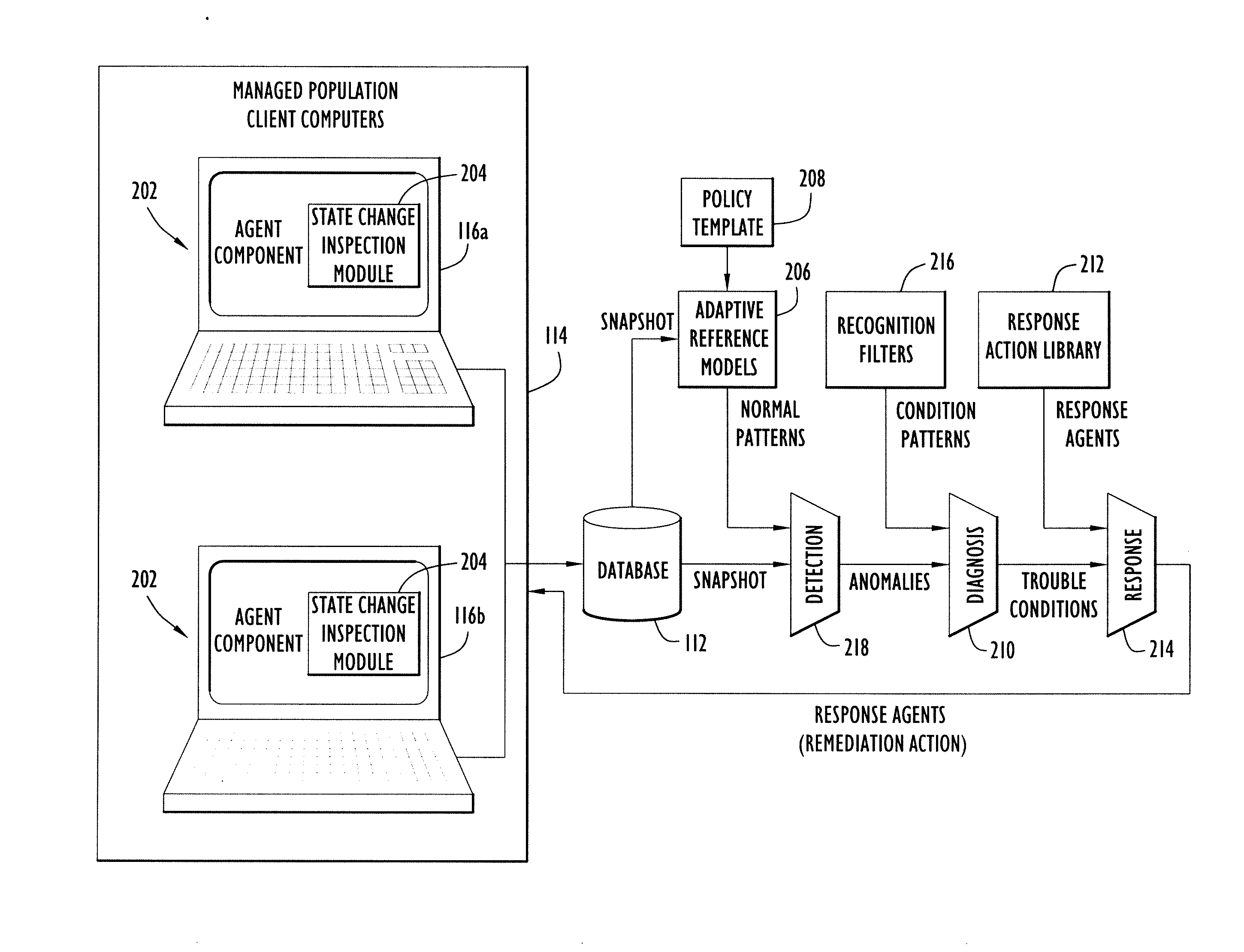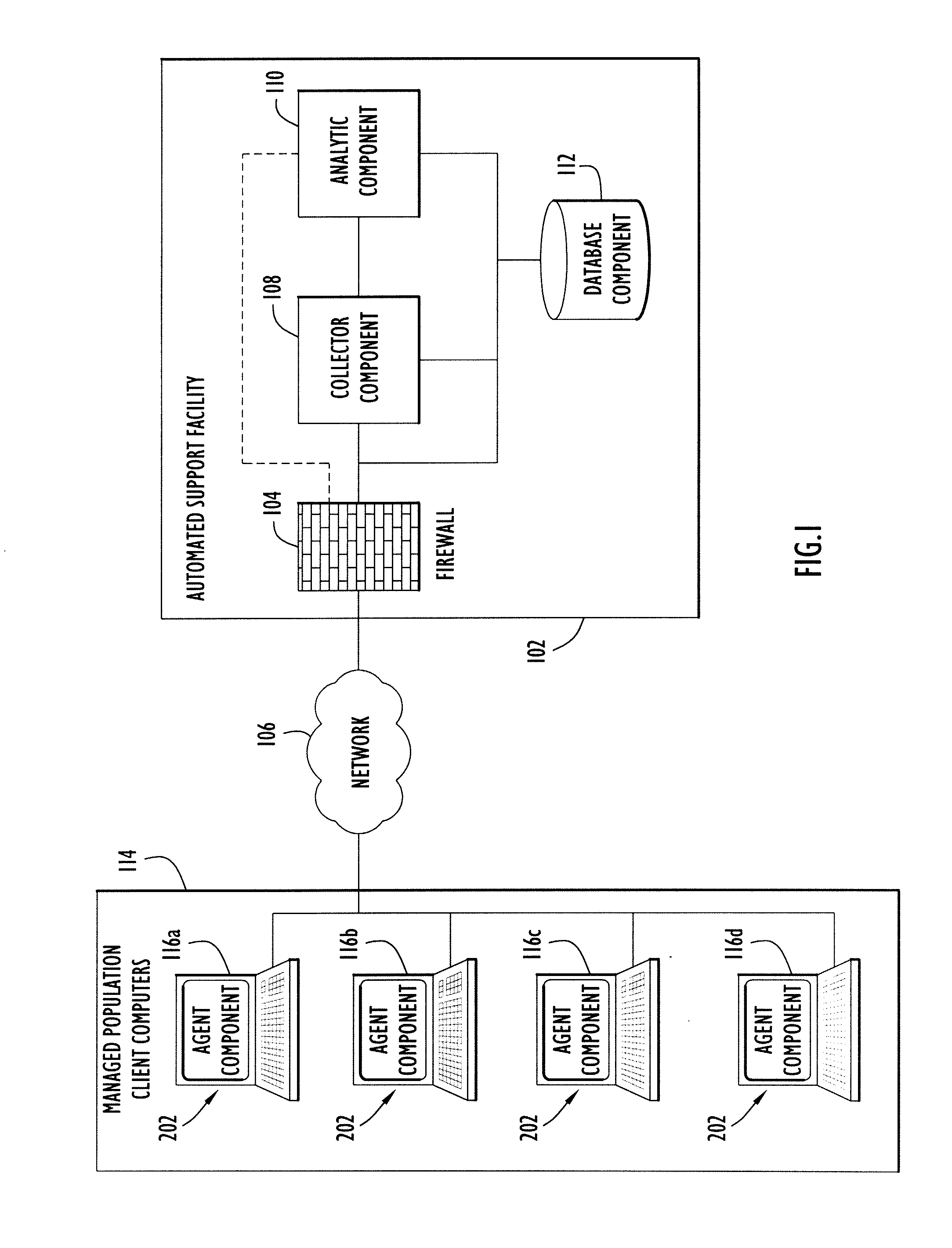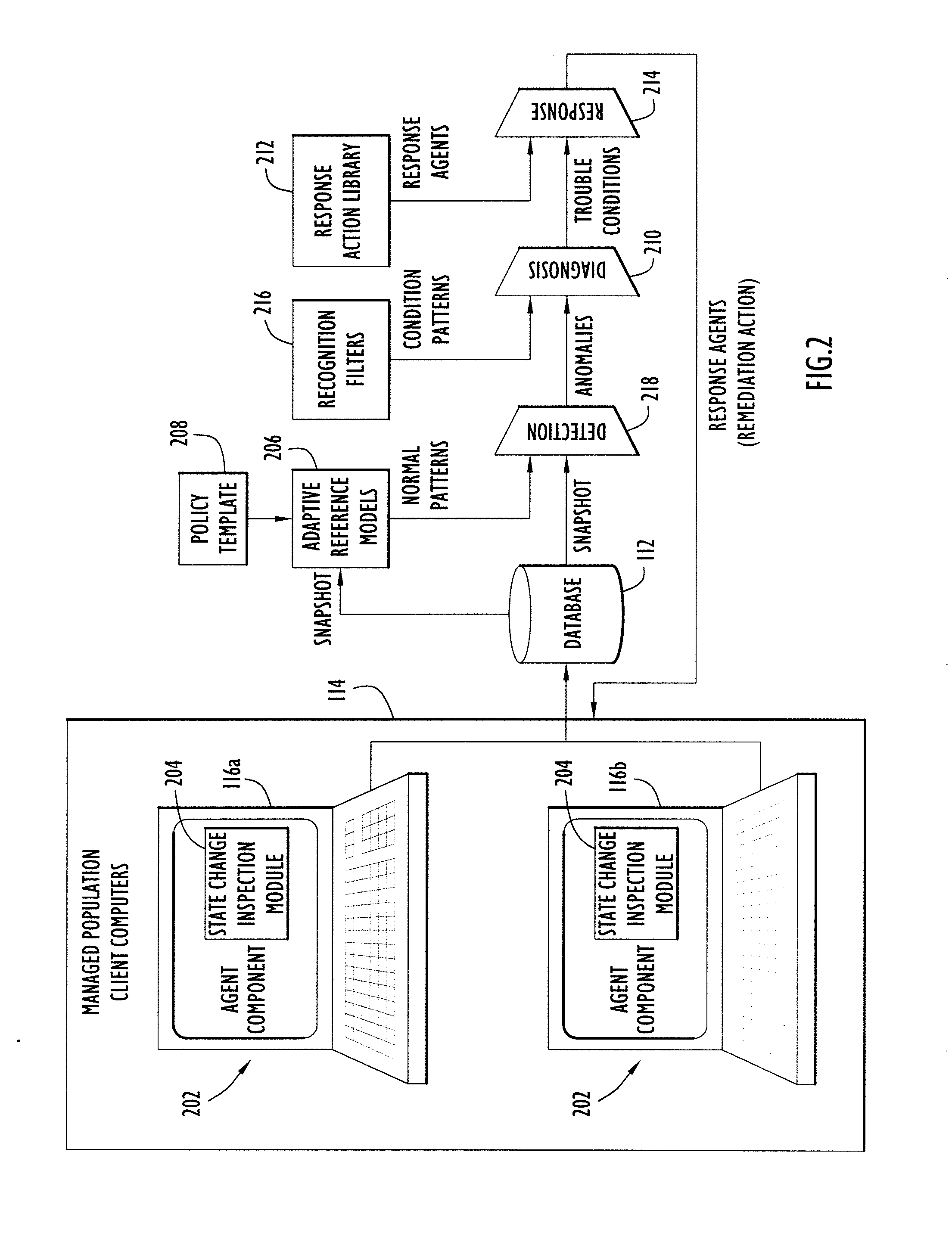Automated Malware Detection and Remediation
a malware detection and remediation technology, applied in the field of automated anomalies, can solve the problems of significant labor costs associated with investigating, diagnosing and resolving, computer is not working properly, and lack of resources or ability
- Summary
- Abstract
- Description
- Claims
- Application Information
AI Technical Summary
Benefits of technology
Problems solved by technology
Method used
Image
Examples
Embodiment Construction
[0025]Computer problems, and in particular those caused by malware, continue to plague computer users and information technology (IT) professionals. Presently, even anti-virus vendors themselves are finally admitting that “signature-based” anti-malware technology is declining in its effectiveness, and security conscious customers are being forced to consider alternative technologies to shore up their defenses. In particular, customers are worried about targeted and zero-day attacks for which signatures do not exist. Embodiments of the present invention detect and remediate a variety of malicious and undesirable applications, even applications used in targeted and zero-day attacks.
[0026]For purposes of the following discussion, the term “malware” is meant to encompass applications that are destructive, propagate automatically, and / or enable unauthorized access to information. “Malware” is also meant to encompass undesirable applications and unauthorized applications. Undesirable appl...
PUM
 Login to View More
Login to View More Abstract
Description
Claims
Application Information
 Login to View More
Login to View More - R&D
- Intellectual Property
- Life Sciences
- Materials
- Tech Scout
- Unparalleled Data Quality
- Higher Quality Content
- 60% Fewer Hallucinations
Browse by: Latest US Patents, China's latest patents, Technical Efficacy Thesaurus, Application Domain, Technology Topic, Popular Technical Reports.
© 2025 PatSnap. All rights reserved.Legal|Privacy policy|Modern Slavery Act Transparency Statement|Sitemap|About US| Contact US: help@patsnap.com



